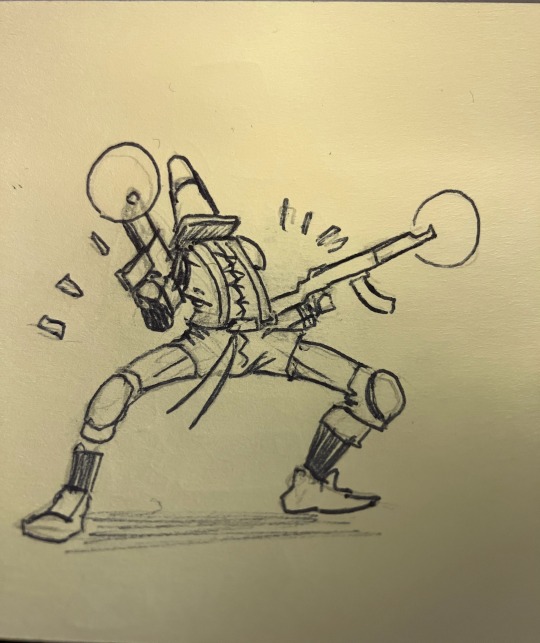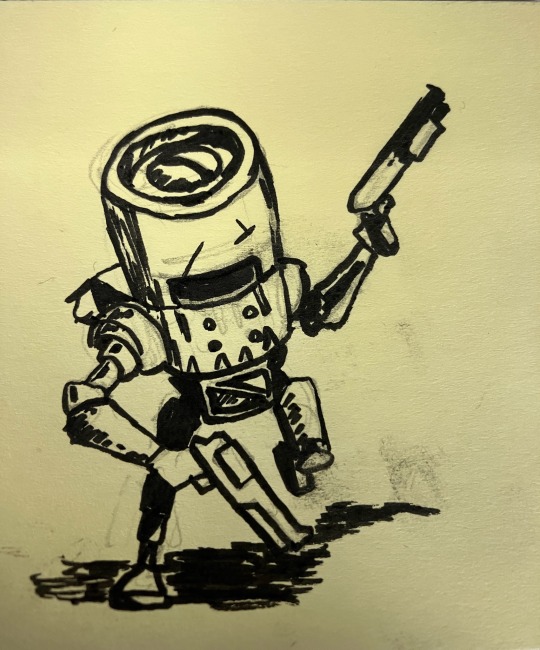Text
Appendix D: Some Pig/One More Final
The first three posts in this series are here.
Undertale was a slightly postmodern children's fantasy movie produced by Jim Henson's Creature Shop in the '80s. Noah Hathaway played the protagonist, Frisk, who went on a long quest to escape from a magical prison inside Mt. Ebott; Frisk's father had thrown them into the mountain, known to be full of monsters, in an attempt to kill them. However, it's suggested that as a human, Frisk is inherently more of a protagonist than a monster can be, and has a vague sort of magical power over them. Toriel's death, which Frisk accidentally causes early in the movie, is commonly listed as a Peak Sad Childhood Moment.
George Orwell wrote The Writing In The Web, a political fable about a cult started by a well-meaning spider. E. B. White wrote Snowball's Farm, a whimsical children's tale about a farm whose animals decide to take over.
Infamously, Emmanuel Goldstein's monologue fills dozens of pages, takes at least three hours to read aloud, and brings the plot of Ayn Rand's 1984 to a screeching halt.
Short story collections and anthologies often keep the same title, author, and spirit, it's just the stories that are swapped out. For example, classic episodes of Rod Serling's The Twilight Zone include A Wonderful Life, The Secret Life Of Walter Mitty, Miracle On 34th Street, and The Sixth Sense. 1983's The Twilight Zone Movie includes segments based on classic episodes Eternal Sunshine of the Spotless Mind (directed by John Landis and given anti-war themes), Cocoon, The Poltergeist, and In Search of the Twelve Monkeys (the original starred a young William Shatner). Candle Cove is an episode of Black Mirror.
League of Extraordinary Gentlemen was a 1999 Ben Stiller comedy about a team of low-rent superheroes who theme themselves after public domain characters because they cannot afford licensing fees. The film was well-reviewed, but a box office bomb. It was actually the first film to use Smash Mouth's One Week - the One Week music video is actually cross promotion with League of Extraordinary Gentlemen - and it would remain the film most associated with the song until Dreamworks' Happily N'Ever After hit theaters two years later.
The Amazing Digital Circus was a virtual pet game and toy line that struck when the iron was hot on that niche, before being bought out by Hasbro and rebooted a few times in different forms and mediums. Lauren Faust created a long-running television cartoon of it that was a huge smash hit with fandom culture despite the show's clearly very young target audience. The property's canon is all very light kiddie fare; the scariest thing about The Amazing Digital Circus is that for a brief and touchy stretch of time in the early 2000s, it was owned by the Peoples Temple, which was seriously considering turning it into a recruiting platform.
Your cringe unpublished works that you gave up on were almost certainly swapped around with other people's cringe unpublished works that they gave up on. There's lots of upwards and downwards mobility to the scramble, but not usually that much. Exceptions are very rare - like a beggar suddenly being made king, or a god being reincarnated into an ant - but they do occasionally happen. For example, what you know as the land of Oz exists only in the head of a young Milwaukee stoner, who suddenly came up with the idea for an epic graphic novel one day in the 2010s while sitting on the bus, and spent a couple of years absolutely convinced she would eventually make it. (She cannot draw.) Conversely, L. Frank Baum's children's fantasy series, Enormia, which has been adapted and reimagined many times, most notably as audiences' introduction to color film, exists in your world only as a different Milwaukee stoner's overly elaborate backstory for his jerkoff sessions. This kind of thing is much more the exception than the rule, and even such exceptions are almost always much smaller in scope - an obscure stillborn project getting swapped around with an obscure out-of-print novel, or an obscure direct-to-video z-movie.
The True Detectives forum and its many schismatic spinoffs, all of which are devoted to discussing mystery fiction, host literally thousands of Wind fanfics. Many of the writers - perhaps most of them - have never actually read Wind, just other fanfiction of it; next to none of the fics are worth reading. Most Wind fics reuse the original protagonist, Rorschach, but treat him as a generically relatable blank slate. The most common fic format by far is the "altdunnit", a form of what-if scenario in which the mystery that sets off Wind's plot is different in some way.

Rorschach is held by a substantial portion of the fandom to be an egg (a trans woman who has not realized it yet). Wildbow has never endorsed this interpretation, and it doesn't seem to be much on his radar. In recent years, the trans Rorschach portion of the fandom has grown; they don't tend to look especially kindly on Warn, much of which Wildbow wrote as a response to fans (like those on the True Detectives forum) he felt had been too inclined to take Rorschach's side in Wind. Flame wars over Warn's content were constant throughout its serial publication, and made it easily the rockiest experience of Wildbow's writing career.
Some noteworthy and relevant podcasts include Jonathan Sims' The Dresden Files, the Ranged Touch Network's Scott Pilgrim Made The World, Doof Media's Winding Down (later Warning Down), and the McElroy family's The Adventure Zone (an actual play podcast which has currently had three major campaigns, two anthology series, and various one-shots). Film Reroll is still an actual play podcast that runs the basic setups of movies (and occasionally other media) as short tabletop campaigns; occasionally, their version of a movie will be much closer to ours than it is to the version of the movie in their own universe.
Xenobuddy was an early childhood public access show, originally created for the BBC in the late 1990s but later aired internationally. The title character is a small alien puppet who lives on a futuristic spaceship staffed by children (who speak a vague conlang akin to a dollar store Esperanto). At the end of every episode, it gets lost and is found, usually by (harmlessly) bursting out of one of the children. It was very popular with its target audience and much loathed by parents. Edgy ironic fanart depicting the titular Xenobuddy as some kind of dangerous parasite abounds.
Static is a supernatural slasher franchise created by Wes Craven, with the first film, also simply titled Static, released in 1984. The movies concern a group of gibbering neotenous ogre-fae who wake up in the modern day after a long sleep, incorporate televisions into their bodies, and start eating people by sucking them into hellish pocket dimensions. The Screen-Guts collectively are probably in the top five antagonists most people think of when they think of slasher horror.
Toby Fox's ROSEQUARTZ is especially known for its meta take on video game morality systems. The game has a mission-based structure; throughout it, the player is encouraged to take on a pacifist playstyle, championed by the player character's late mother, the title character. However, the Crystal Gems give the player enough autonomy that you are entirely able to take a much more violent tack; doing so has a rippling effect on the game's writing in countless immersively-integrated ways. If the player goes out of their way to be as murderous as possible - the so-called "genocide route" - the differences from the main route grow much more extreme, and rather than gaining allies, you start to lose them, as the Crystal Gems realize what you're doing and one by one turn against you. If you manage to shatter Garnet - it's the hardest and most iconic fight in the game, Megalovania is playing, her Future Vision gets used for all it's worth - then you use your knife to slash at the cosmos, erasing Earth, Homeworld, and everything else. This, Toby Fox is saying, is apparently all you want out of a video game - another toy to break.
Warner Bros still did Space Jam with Michael Jordan and the Looney Tunes, it's just that the Looney Tunes in question were Mickey Mouse and friends. They also still did a second one with LeBron James, which was, by God, somehow worse. They put Ms. Frizzle in it.
Walt Disney made his squeaky clean reputation on the back of adaptations of things like Rudyard Kipling's adventure novel The Call of Cthulhu, P. L. Travers' Thomas the Tank Engine, and Erich Kästner's feel-good coming-of-age kidnapping tale about the power of perseverance, Lolita, originally done with Hayley Mills and later remade with Lindsay Lohan.
Nabokov's extremely controversial literary classic that has defined the idea of the unreliable narrator is Father's Trap, from the perspective of a man who plots to obtain custody of both of his daughters for nefarious purposes. Most publishers ignored Nabokov's instructions not to depict the twins, Lisa and Lottie, on the cover. Stanley Kubrick and Adrian Lyne have directed mediocre film adaptations, and songwriting team Lerner and Loewe did a musical that was a legendary flop.
The Japanese fashion movement is Gothic Pollyanna, after an otherwise-forgotten series of penny dreadfuls about a cute, cheery, rules-minded young girl who is, despite appearances, an insane criminal. Minor character Bonesaw in Alan Moore's Worm Turns also clearly hearkens back to the Pollyanna stock character.
The DEA was a prime-time soap opera about the ongoing "war on drugs"; it ran for eleven seasons from 1982 to 1993. Its plot focused on federal agents working at the Drug Enforcement Administration office in Albuquerque, New Mexico, and especially partners Hank Schrader and Steve Gomez and their families. It is mostly remembered today for its downer ending (in which the treachery of late-show villain Walter White, or "Heisenberg", gets the leads killed, and he escapes from justice), and for its far-more-acclaimed spinoff series Better Call Saul, which also ran for eleven seasons from 1993 to 2004, functioning as a prequel, midquel, and sequel to The DEA.
Between The DEA and Better Call Saul, Kelsey Grammer played crooked lawyer Saul Goodman for twenty consecutive years of primetime TV, first as featured comic relief and later as a leading man. (He also guest-starred on the mostly-forgotten Mall Cop, establishing that it, too, was set in the world of The DEA and Better Call Saul.) Better Call Saul won more than a dozen Primetime Emmys. Peri Gilpin received several of these for her performance as Kim Wexler.

St. Elsewhere was a film written and directed by M. Night Shyamalan in the late 1990s; it was highly acclaimed and successful, and established Shyamalan in the public eye as a skilled auteur with an affinity for twist endings. The film's final scene reveals that its main setting, St. Eligius Hospital, exists entirely within the imagination of an autistic boy, Tommy Westphall, as he gazes into a snowglobe. The so-called "Tommy Westphall Universe Hypothesis", which posits that this same twist applies to most of fiction due to a network of crossovers, was invented by a Saturday Night Live sketch shortly postdating the film's release, in which an amnesiac Charles McGill (from Better Call Saul) wakes up in St. Eligius, attended to by a cast of characters who are more concerned with their own nonexistence.
After rising to prominence as a writer, storyboarder, and composer for Pendleton Ward's Science Time (where she established the Summer/Jessica relationship that would come to define later seasons), Rebecca Sugar got to make her own cartoon, Henry Ichor. Set in a recently post-apocalyptic but strangely cheerful world, Henry Ichor concerns a young teenage boy who is conscripted as a mech pilot due to his rare and innate ability to link to the powerful Evangelion mecha. (His preferred Evangelion is eventually revealed to be a form of his late mother, the reason he can do this in the first place.) Henry turns out to be a vital asset in protecting humanity from the monstrous "Angels" that frequently threaten it, and is surprisingly emotionally mature for his age. However, the adults around him (especially his father, Gennady) frequently push him too far, especially considering his generally noncombative and pacifistic nature. There is much interpersonal drama and much singing about it, with a very vocally trained cast. After several seasons of slow buildup, the show was forced to suddenly rush to its ending in only a few (infamous) episodes after an arc where Henry had a romance with an Angel in male human form. Henry Ichor The Movie and an ensuing miniseries, End Of Henry Ichor, helped bring the show to a more thematically satisfying conclusion.
Although he has played a creative or consultant role in many animated projects, Alex Hirsch is best known for the one he was actually the showrunner for, Disney Channel's smash hit Sunnydale. Focusing on a small California town constantly plagued by supernatural threats, Sunnydale generally followed a simple monster-of-the-week format, but kept audiences on the hook with teases at a deeper underlying mystery. The show almost didn't get a season two, as Hirsch found working with Disney very tiring, but he was eventually persuaded; season two ran through the rest of Hirsch's ideas at a faster pace, and concluded the show with the leads graduating from Sunnydale High.
For a brief historical moment, Daron Nefcy's show, Ender vs. the Space Bug Army, looked like it would become the successor to Sunnydale, keeping Disney Television Animation prestigious after Sunnydale ended. However, though Ender drew in a big crowd, and lasted almost twice as long as Sunnydale, it was not ultimately as well-received. EvtSBA is a children's space opera, wearing its Starship Troopers (Joss Whedon) inspiration on its sleeve, but also clearly copying some (superficial) notes from Philip Pullman. Set in a future where mankind has come into violent conflict with bug-like aliens, the show follows unbearably smug boy supergenius Ender as he is sent to military school to prepare for interstellar warfare. The show has an extremely cutesy and hyperactive tone; typical filler episodes include the one (generally taken as meta about fandom drama) in which Ender's siblings' futuristic internet arguments prove instrumental to the survival of the human race. Later seasons get a bit more serious, but focus heavily on shipping. The show is infamous for its ending, in which Ender, for his final exam, destroys the Formics' home planet and releases a psychic signal that eradicates the Formic race. Although the show explicitly notes that this includes many individual Formics who we have previously known as sympathetic characters, it is nonetheless played as a happy ending in which a hostile colonial power is defeated. Ender has ended the war; he has beaten the Space Bug Army.
"Meugh-Neigh. 'Meugh' like the cat, 'neigh' like the horse."
"Does it mean something?"
"No answer; none at all."
Orson Scott Card is an extremely prolific author of speculative fiction. Although it isn't as close to his heart as the Steel Gear series, in which he got to flex his military sci-fi muscles and allegorically retell stories from his faith, he is undoubtedly best known for Ishtar's Curse. Initially a short story and later expanded into a full novel, the plot concerns young Princess Ishtar, or Star, heir to the heathen fairy kingdom of Meugh-Neigh. (In later novels, she changes her name to Bethlehem Diaz, or Beth.) Spoiled and destructive but magically talented, Star is sent to twentieth century Earth so she can develop the wits and the strength of character to be a viable wartime leader for her people - or at least so she can be kept out of the way. After several years of personal growth and magical misadventures with companions she met on Earth, a more grounded Star devises a spell to erase the magic that makes up the bodies of most of her throne's enemies. This plan works, and merges Meugh-Neigh into the Earth as a small and ordinary European country. However, though her subjects are eager to celebrate her for this, Star is devastated when she realizes that she has killed trillions of innocent spirits, and, seeking to atone, she takes on the title of Speaker for the Dead (also the title of the book's first sequel). Although it's frequently ranked highly in lists of fantasy novels of the twentieth century, Ishtar's Curse has received some harsh criticism, with the standard line being that Star is an idealized fantasy of a repentant Hitler figure, and that the text presents excessive justifications for her actions. The story has also been called a reactionary response to Wilde's The Little Mermaid. After more than twenty years, a film adaptation of Ishtar's Curse was released in 2009, starring Dakota Fanning, to mixed reviews. The box office took a further hit due to a boycott campaign, after Card's views on homosexuality (and, relatedly, his membership in the LDS Church) became widely known. In the end, it lost the studio a lot of money.
Hideaki Anno is best known for the classic smash hit anime he made for Studio Gainax, Einstein Goliath Nestorian, a psychologically intense deconstruction of martial arts shonen like Yoshiyuki Tomino's Dragon Ball. Einstein Goliath Nestorian concerns a mystery man known only as Saitama, who finds that he has become dissatisfied with life and alienated from the world after only three years of training have enabled him to easily surpass any physical challenge. The original series is known for its sudden, surreal, and clearly budget-driven ending, although this was quickly alleviated with a similarly surreal but more definitive finale movie. Although many Western anime fans often think of Einstein Goliath Nestorian as pretentious and ultra niche, it was actually a huge mainstream hit in Japan, with a colossal franchise of adaptations, merch, and spinoffs (notably including a series of Retrain films, which began as extremely close shot-for-shot remakes of the original series but wound up spiraling into a very different updated timeline).
Previously most noteworthy for his 2003 visual novel Oreimo, Gen Urobuchi was tapped by Shaft for their extremely successful and acclaimed anime Ohayou Hana!, hailed as a deceptively dark deconstruction of the teen idol genre. The plot concerns a girl, Saionji Mayuri, who leads a double life, being of little note at school, out of costume, but spending much of her time as #1 idol Hana. Her mental stability begins to deteriorate as she realizes that the adults in her life - especially her father, himself a former idol - have groomed her to serve as a drugged and hypnotized propaganda mouthpiece for a shadowy conspiracy. She winds up in the worst of both worlds as her ensuing breakdown, and her handlers' response to it, destroys both of her lives and brings ruin to those she cares about. In addition to the popularity of the actual anime, many of its songs became decontextualized J-Pop hits. The idol anime genre would then receive a glut of edgy lesser imitators, like Love Live: School Idol Project, Cheetah Girls, and magical girl fusion Symphogear. Although the original Ohayou Hana! was a self-contained twelve-episode story, it received a sequel movie shortly thereafter, Ohayou Hana! Rebel!, which ended on a cliffhanger that has still not been resolved over a decade later. The upcoming Ohayou Hana! MK Ultra! is expected to get things back on track. An abridged series originating on 4chan, focusing on cropped screencaps from Ohayou Hana!, called the title character "Miss Ohio", producing the memetic tagline "being Ohio is suffering".

Zack Snyder first came up with the idea for Madoka around 2000, a long time before he'd actually get to make it; he put the project on hold in 2006 to make his adaptation of Worm Turns. He developed the idea with his wife Deborah and a cowriter, Steve Shibuya. Inspired by the Disney Princess phenomenon, as well as Naoko Takeuchi's Pretty Cure (one of the few anime that had already become a hit in the States), Snyder wanted to tell a coherent story about fights between magical girls who could make anything happen, who could make any fantastical world or visual appear. In Snyder's film, we follow Madoka Kaname, a teenager attending a Catholic school in Los Angeles. Madoka and her friends are approached by a strange young woman who goes only by "Mommy", and her animal companion (a CGI-ed up squirrel-cat thing), QB. They offer to make the teens into "magical girls", granting them one wish each in exchange for a life devoted to spiritual warfare. (Another mysterious new girl, Lilly, urges them not to take the deal in the strongest possible terms.) This turns out to be a scam; QB is pitting the magical girls against one another for his own reasons, and in the end, every magical girl and her wish gets corrupted. Despite much of the film's plot being a horrific bloodbath - the MPAA demanded a lot of cuts to get it down to a PG-13 rating - there is a happy ending; Madoka finally makes her own wish and uses it to topple QB's whole system. Madoka isn't often discussed nowadays but it was a major discourse bomb when it came out in 2010, alternately being called misogynistic Orientalist trash and a subversive feminist masterpiece. Snyder, for his part, often notes that QB is intended as an allegory for exploitative forces within the entertainment industry that treat young women as disposable resources with an expiration date; this is already clear to anyone who's watched the film, which is not exactly subtle in its symbolism. He also explains that the film sexualizes the girls in an effort to shame the audience, to get people to understand that they are objectifying the characters in the same way that QB does. The soundtrack's got a really cool ethereal cover of Nine Inch Nails' King Nothing on it, which is probably the most remembered part of the film today.
Selena Gomez became a star by playing Violet Parr on Disney Channel's superhero sitcom The Incredibles. While the show was initially a very throwaway villain-of-the-week affair whose leads had to keep their powers hidden from the public and their caped escapades secret from the government for self-explanatory comes-with-the-genre reasons, it would eventually unfold that the show was set in something of an X-Men-style dystopia where superheroism had been outlawed and supers oppressed by the government as a potential societal fifth column.
Brad Bird directed one of Pixar's most celebrated films, Wizards of Waverly Place; it was Pixar's first film with a predominantly human cast. Disney was hungry for a fantasy property after losing a bidding war for the Luz Noceda rights. It had strong populist anti-eugenic themes, with an elaborate wizarding hierarchy of antagonists who seek to remove the Russo family's magic as part of an effort to curb wizard overpopulation. The sequel came more than a decade later, and wasn't nearly as good.
In addition to Worm Turns, Alan Moore is notable for the heavily metafictional comic Pagemaster, about a boy, Richard, who finds a magical library that contains all stories that have ever been or could ever be told; he becomes lost and imperiled in assorted pieces of historically noteworthy literature (initially ones in the public domain, though later volumes would start using legally safe serial-numbers-filed-off versions of modern stories). The 2003 film, in which Sean Connery played the librarian in one of his last film roles, is widely regarded as a terrible, deeply-toned-down adaptation that didn't grasp the tone or themes of the original story at all; it only covered the first half of the first volume, in which Richard meets "genre spirits" who wish to sort all stories into rigid categories. In a later volume, Pagemaster Millennium, an aged Richard Tyler, who has since taken on the mantle of librarian himself, meets a teenage girl, heavily implied to be Luz Noceda, who has also become lost in the library. She has become corrupted by an eldritch book, or "Necronomicon", written by "the Wrong Author", heavily implied to be the devil (and/or Hugo Astley, an Aleister Crowley caricature from W. Somerset Maugham's The Winged Bull). Flushed with demonic power and enraged by what she's become, a monstrous Luz tears through the library in a blaze of hellfire, seeking to destroy all of literature and the world. It is only through the intervention of the Fat Controller - heavily implied to be God - that Luz is defeated; he mercifully erases her by hitting her with a train, and laments what she became.
68 notes
·
View notes
Text
"Okay, so I may have done a little oopsy-doopsy, but-"
[AIR RAID SIREN STARTS IN THE DISTANCE]
39 notes
·
View notes
Text
I know I wasn't supposed to.
But I went into the woods.
Another me came out.
We seem to be equally suspicious that the other is the imposter. I keep checking him for roots and he keeps doing the same to me. Is it a double bluff? Is he gaslighting me into thinking I'm the neverwas thing and he's the human being with organs and anxiety? Is he truly unaware he's a mockery given shape? If he can be unaware of it, I can be too.
That's kind of a lonely thought, really.
-
It's been several days and the tests are all inconclusive. We both bleed normal blood that doesn't turn into a spider and jump to the ceiling when you touch it with a hot wire. We know the same trivia. We pretended to know the same stuff we forgot that we were embarrassed not to remember. We both got uncomfortable at the exact same time when we walked into the cathedral.
We arm wrestled and didn't tie somehow, but we weren't sure if winning meant he was more likely to be fake or less likely.
I worry that we don't really know anything about accursed other selves from the woods.
Wikipedia has been less than helpful.
-
Mom claims she knows which one of us is her 'first boy' but refuses to tell us on the basis that she loves us both and thinks we should get along.
He thinks she can't tell and is too embarrassed to tell us. I think its because she wants to double her chance at grandkids. The difference in opinion is interesting, but is it a sign of an imposter, or the divergence of our experiences?
-
We've decided to flip for the job. I won, so I don't have to find new work. I don't know if that's a win.
I think the curse is that neither one of us is an unnatural imposter out to kill the other. Or else whichever one of us is the monster has realized they don't think my life is worth killing to steal.
I know I think about smashing that copy of my own face open with a rusty fire axe, a gush of sea water and blasphemous screams roiling from the empty hole that should contain bone and brains, and it just seems like a lot of trouble and effort.
I think I'm going to start going by my middle name.
-
Another me just showed up on our doorstep.
He's caked in mud, sticks and twigs in his hair, babbling about harrowing experiences. I'm fixing him some tea while the other-other me hands him the pamphlet we made just in case.
Now he's telling us about the Night King. Like we don't know.
I need a bigger place.
169 notes
·
View notes
Text
i think if you stopped time and brought a gorilla to a new york deli and then started time again it wouldnt even be startled like it would immediately peruse the menu and order a reuben in sign language
21K notes
·
View notes
Text
I forget that Aisha is thirteen like…why aren’t you in preschool rn
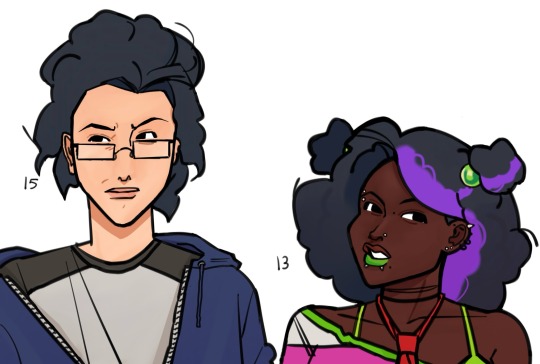
#love the linework on this one#reminds me of corey walker#parahumans#worm#wildbow#worm fanart#skitter#imp
171 notes
·
View notes
Text
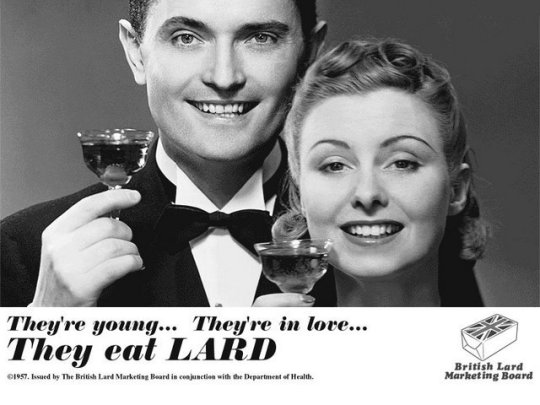
They're young... They're in love... They eat LARD
British Lard Marketing Board
1K notes
·
View notes
Text
instagram
Rare fanart of Thomas Calvert and Emily Piggot, posted from the artists instagram with permission
164 notes
·
View notes
Text
Type of guy who refuses to acknowledge any Star Wars movie after A New Hope as canon to the original film
26 notes
·
View notes
Text
When I've got a minute I'm going to write up what I did and didn't like about the fallout show and make all of you look at it
17 notes
·
View notes
Text
my biggest problem with the fallout show is that it was so conspiratorial in tone that at the end a character says "no matter how chaotic it looks there is always someone at the wheel" which is a. borderline cognitohazardous conclusion about the way reality works
114 notes
·
View notes
Text
Ohhh they made a lot of immensely irksome decisions in that last episode ohhhh
10 notes
·
View notes
Text
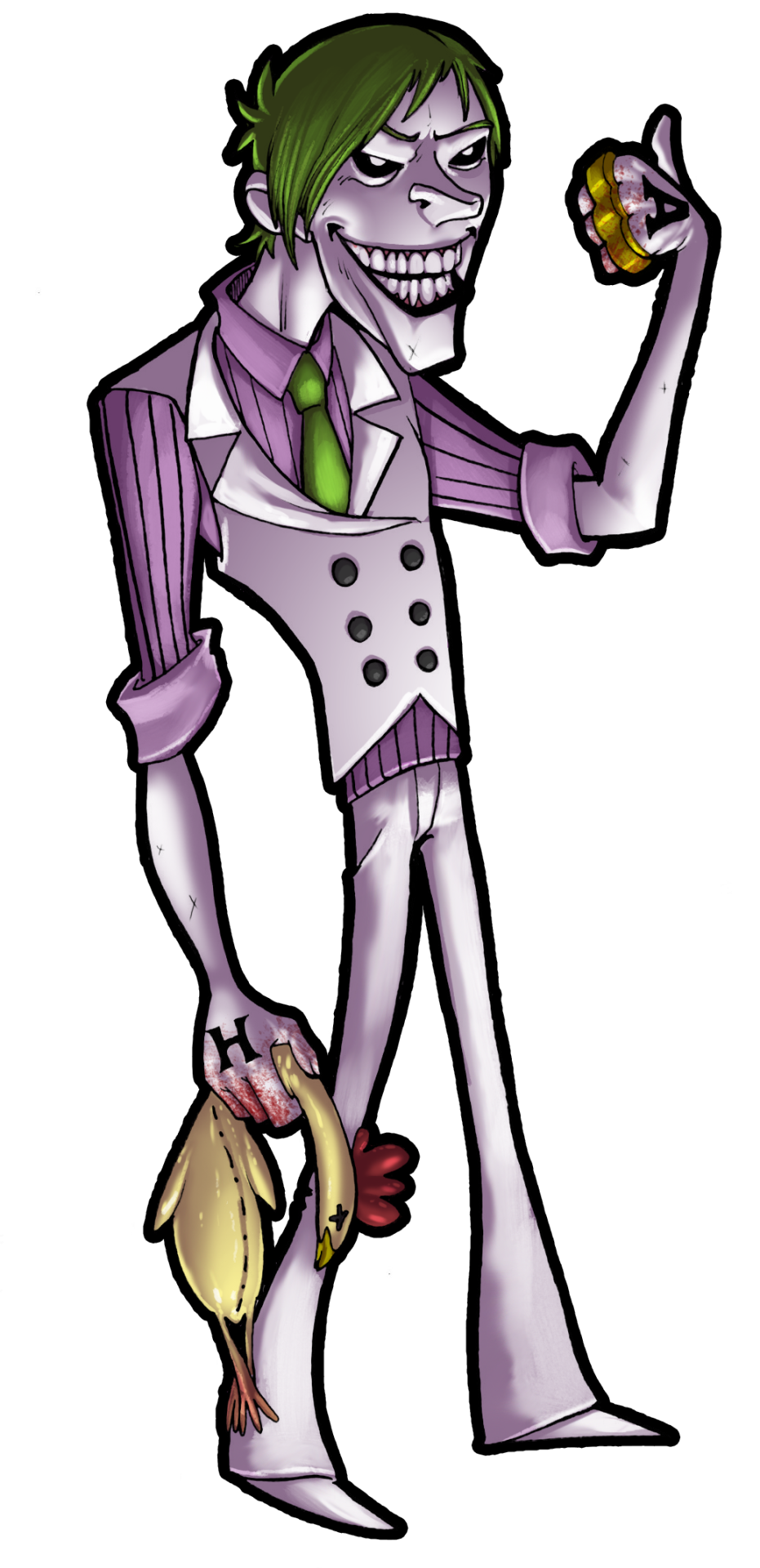

some DC batman rogues gallery redesigns for a TTRPG set in a a sort of retro futuristic 1920's /1940's
On the run from some incident in cuba, Young up and comers Joker and Harley Quinn find themselves in Gothom after a whirlwind series of bankheists , shootouts and murders up the southern coast .
not beholden to any of the various Gangs and families that rule Gothom they have in fact have made waves by starting a gang war when they killed a number of high profile members of the five families in penguins Iceburg lounge (nominally a neutral ground )
this sudden wanton violence from all corners forces an older Bruce Wayne and Selina Kyle out of retirement to bring some sembelence of order to the chaos
20 notes
·
View notes
